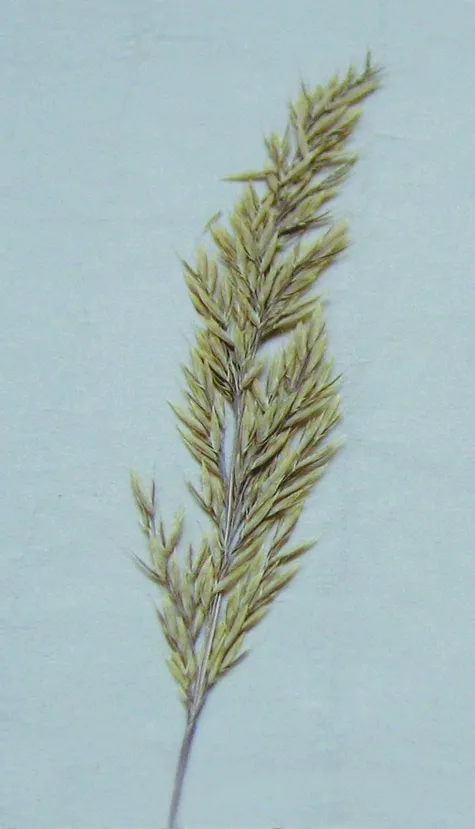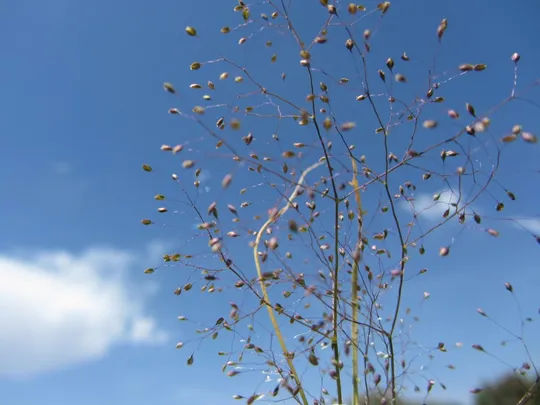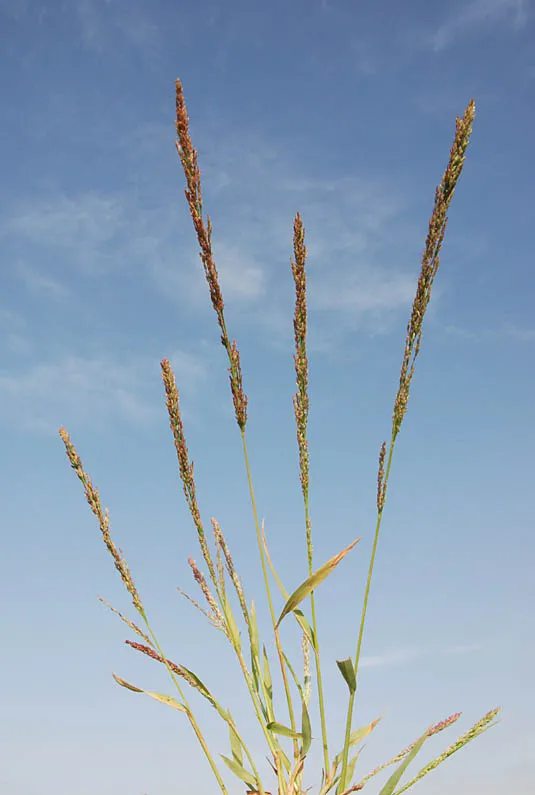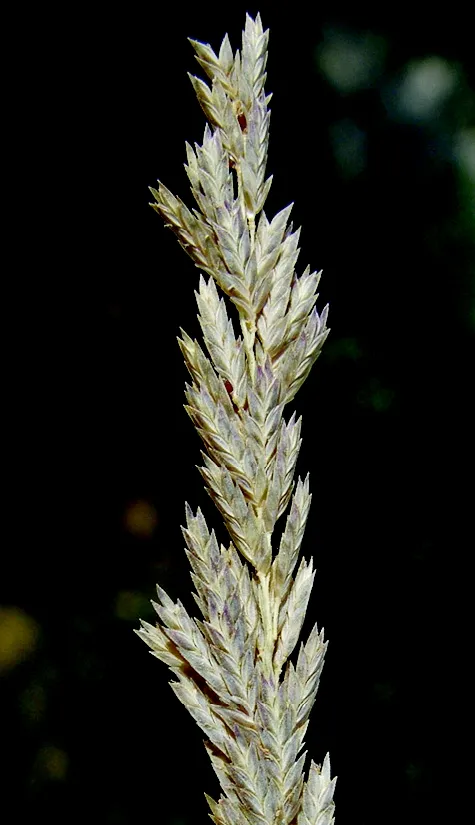Water Whorl-grass, Brookgrass
Catabrosa aquatica
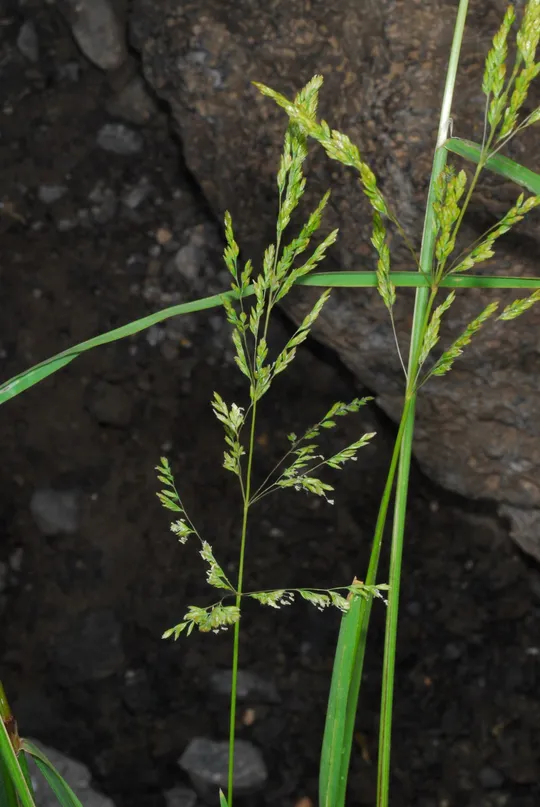
Catabrosa aquatica
currently grows in four regions: the Golan Heights, Upper
Galilee, Kinarot Valley and the lower Jordan Valley at seven sites and
according to estimates there may be 11 sites. In the Golan, it is found in
Sumka, Waset (it dominates in the Mesil canals), En el Beja and Natur. It was
discovered in the Upper Galilee in 2004 at Enot Neria in Wadi Moran in the
Mount Meron area and since then it has been seen there in the lower spring. C.
aquatica is extinct from Metula. It was found the Kinarot
Valley – in the Zaki Lagoons and in lower valley in Wadi Tirtsa (in 1967 and
has not been found since). In the past, in the 1920s-1950s, it was rare, but
had a relatively broad distribution in Israel's Mediterranean regions. In those
years, it grew in another six regions, on sites scattered around the country,
but it disappeared from all of them: Hula Valley (Hula and Kfar Szold), Acre Valley
(Yagur), Sharon (Old Caesarea), Pleshet (Yarkon Beach and Rishon LeZion) and
the Shfela (Bet Jamal). According to Danin (2004), the plant grew in many regions
in addition to those above: in the Carmel, Judean Mountains, Judean Desert,
Jezreel Valley and was also noted as quite common in the Hula Valley.
Edges of clear springs, canal banks and marshes.
The genus Catabrosa has 2-4 species
(depending on the taxonomist's approach) with a northerly distribution, particularly
in the temperate zone of the Northern Hemisphere, but one species also grows in
Chile.
Another species of Catabrosa – C.
capusii, was found once in east Jordan, in a salt marsh in the Azraq
area.
·
Since the 1950s, the number of regions and sites in
which Catabrosa aquatica grows in Israel has declined steeply.
·
The deterioration of the springs and marshes habitat and
of remaining wetlands are undoubtedly behind the extinction trend of C. aquatica populations at sites where it grows. The few remaining
springs with clean water, are threatened by desiccation and pollution. C. aquatica may also be sensitive to overgrazing.
·
The only site located in a declared nature reserve is En
Neria, located in the Mount Meron Reserve.
·
C. aquatic is common and widespread in Europe and the
Mediterranean Basin, usually not endangered. However, in Sweden and Switzerland
it is defined as vulnerable (VU) and in Croatia as Critically Endangered (CR).
The Catabrosa
aquatica population discovered in
the Neria Stream should be monitored and a local conservation site at the Waset
Junction in the Golan
Heights should be established. Efforts should be made to restore habitats at
least at some of the sites where it once grew, and to reintroduce it to sites
where it once grew, such as the Hula Valley.
Catabrosa aquatica is characteristic of rainy
temperate regions and has a very broad distribution: it grows throughout the
temperate areas of Eurasia and North America and in the Mediterranean and Irano-Turanian
regions. In the Mediterranean region, it is found in Spain, France, Corsica,
Sardinia, Sicily, Croatia, Montenegro, Albania, Greece, Bulgaria, Turkey,
Syria, Jordan, Israel, Morocco, Algeria and Libya.
Catabrosa aquatica is a perennial herbaceous species in the Gramineae
(Poaceae) family characteristic of clear springs and marshes, which once grew on relatively many sites
in 10 regions in Israel. It is now extinct in most of them, as a result of
desiccation, development and pollution of wetlands in Israel. C. aquatica is an excellent example of an aquatic
species, which is apparently sensitive to overgrazing and water pollution, as
are many other aquatic plants. Although these species are neither exclusive or
endemic and they are common in wetlands in Europe and other continents, local
extinction severely reduces the biodiversity in aquatic ecosystems in Israel.
Current Occupancy Map
| 1000 squre meter pixel | 5000 squre meter pixel | 10000 squre meter pixel | |
|---|---|---|---|
| number of observations | 0 | 0 | 0 |
| in total pixels | 0 | 0 | 0 |
| Family | Gramineae |
| Classification | On the endangered species list |
| Ecosystem | Mediterranean |
| Chorotype | Euro-Siberian – Mediterranean – Irano-Turanian |
| Conservation Site | Waset Junction |
| Rarity |
1
3
6
|
|---|---|
| Vulnerability |
0
3
4
|
| Attractiveness |
0
0
4
|
| Endemism |
0
0
4
|
| Red number |
1
3.7
10
|
| Peripherality | N |
| IUCN category | DD EW EX LC CR EN VU NT |
| Threat Definition according to the red book | Vulnerable |
 Based on:
Based on:
